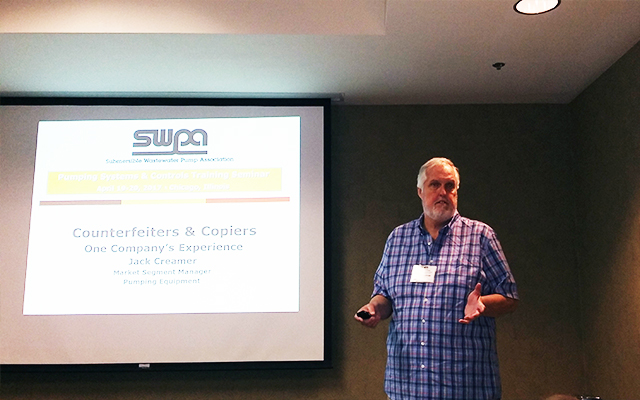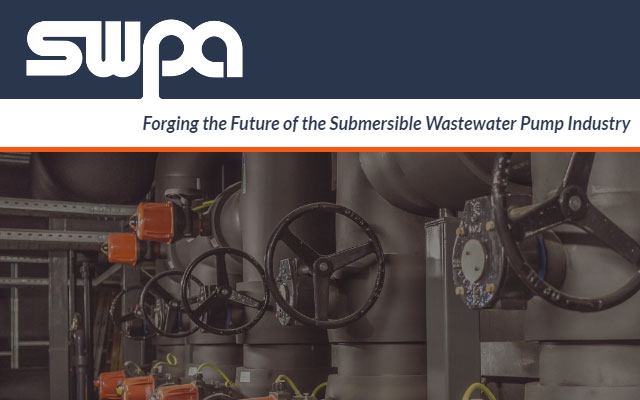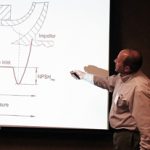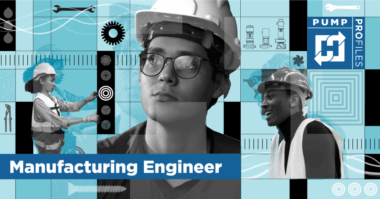Author: Cieana Detloff, Reporting for Empowering Pumps
We’ve all heard of “death by PowerPoint” and many of us have experienced it first hand – sitting through training sessions where the speakers just drone on, putting us to sleep. This was not the case at last week’s Pumping Systems & Controls Training, hosted by the Submersible Wastewater Pump Association (SWPA).
As a Chicago resident, I was really excited to learn of SWPA’s local training session that focused on submersible pumping systems in the wastewater industry. SWPA has been one of the leading organizations to stress the importance of a “total systems approach”, which is aimed at helping design engineers, contractors, owners, and end users select, install, and operate pumping systems more effectively and efficiently.
The Systems Approach to Lift Station Design and Construction was the very first topic discussed – and it set the tone for the entire training experience. Every topic covered after this initial concept supported the principles that were introduced by Adam Stolberg, SWPA’s Executive Director, and Ernest C. Sturtz, P.E., (from CDM Smith). If the goal is creating a well-designed system, you have to know much more about all these components working together – pumps, motors, drives, valves, controls, etc. This training course was very clearly designed to help participants dig deeper into each of these pieces of equipment.
Every trainer had a specialty, sharing their deep knowledge base with the participants. Steve Doolittle (Zoeller Pump Company) educated us on submersible pump construction, discussing details about impeller types, bearings, sealing, and wet end designs. Chris Caldwell (Pete Duty & Assoc) did an incredible job of explaining complex motor concepts in a way that was very easy to digest. I’m more of a “pump” person, so learning about motor efficiency, power factor, torque, and insulation was a bit scary for me; however, he was such an articulate teacher, I could understand everything being discussed (and this was not basic content here!).
Variable Frequency Drives were discussed in full detail, with instructions for establishing minimum speeds and several “rules of thumb” for VFD selection. One thing that stood out is the amount of dialogue that occurred during the training sessions. There was discussion between highly experienced individuals (who would likely never admit to being “experts”, but they really are) and the people who are “in it” day to day. I met mechanical engineers and other professionals who were able to describe the sounds of what it was like to hear cavitation and air entrainment, and how they know to differentiate between the two based on their real-life experiences.
Jack Creamer (Schneider Electric) opened day 2 with a quick discussion on Counterfeiting in the Pump Industry – which was something I didn’t even realize was happening! After that presentation, the training split into two tracks – one of them focusing more heartily on controls. I had the daunting task of trying to pick which track to follow, and realized I wanted to be in 2 places at once! I ended up sneaking in and out of the classes I really wanted to attend.

Jack Creamer, from Schneider Electric, discusses counterfeit equipment that is often sold to unknowing owners.
Thanks to Don Nicoll (Environment One), I learned about pressure sewers versus gravity sewers and the benefits municipalities can achieve by using grinder pumps in pressure sewage systems. Valves are another area of interest to me, so I slipped into the Lift Station Valving class led by Bo Andersson (Flomatic).
He discussed check valves, air valves, and plug/gate valves for wastewater lift stations, helping me to better understand how these valves act in a pumping system.After that fantastic portion, I pushed myself out of my comfort zone and went into a class discussing Motor Controls. John A. Evans (Motor Protection Electronics) did a great job instructing the class on how to size a submersible transducer, reminding them that “one size does not fit all!”
The absorption of all this technical knowledge was aided by doughy pretzels at break time (YUM! Thanks, Carol!) and the afternoon sessions were helpful in expanding my knowledge of PLC controls and enclosures (presented by Rob Ruber and Mark Eubanks from Schneider Electric). I learned more about newer technologies that exist for SCADA systems and the Do’s and Don’ts of Pump Station Start up.
All in all, this 2-day training course was impressive – both in the content covered and the level of experience from the teachers. As the pump industry continues to deal with the problem of losing our talented individuals to retirement, training is a necessity. It’s comforting to know the water / wastewater industry has such a valuable resource in the training courses offered through SWPA.
For more information on upcoming training sessions, please visit www.swpa.org.







